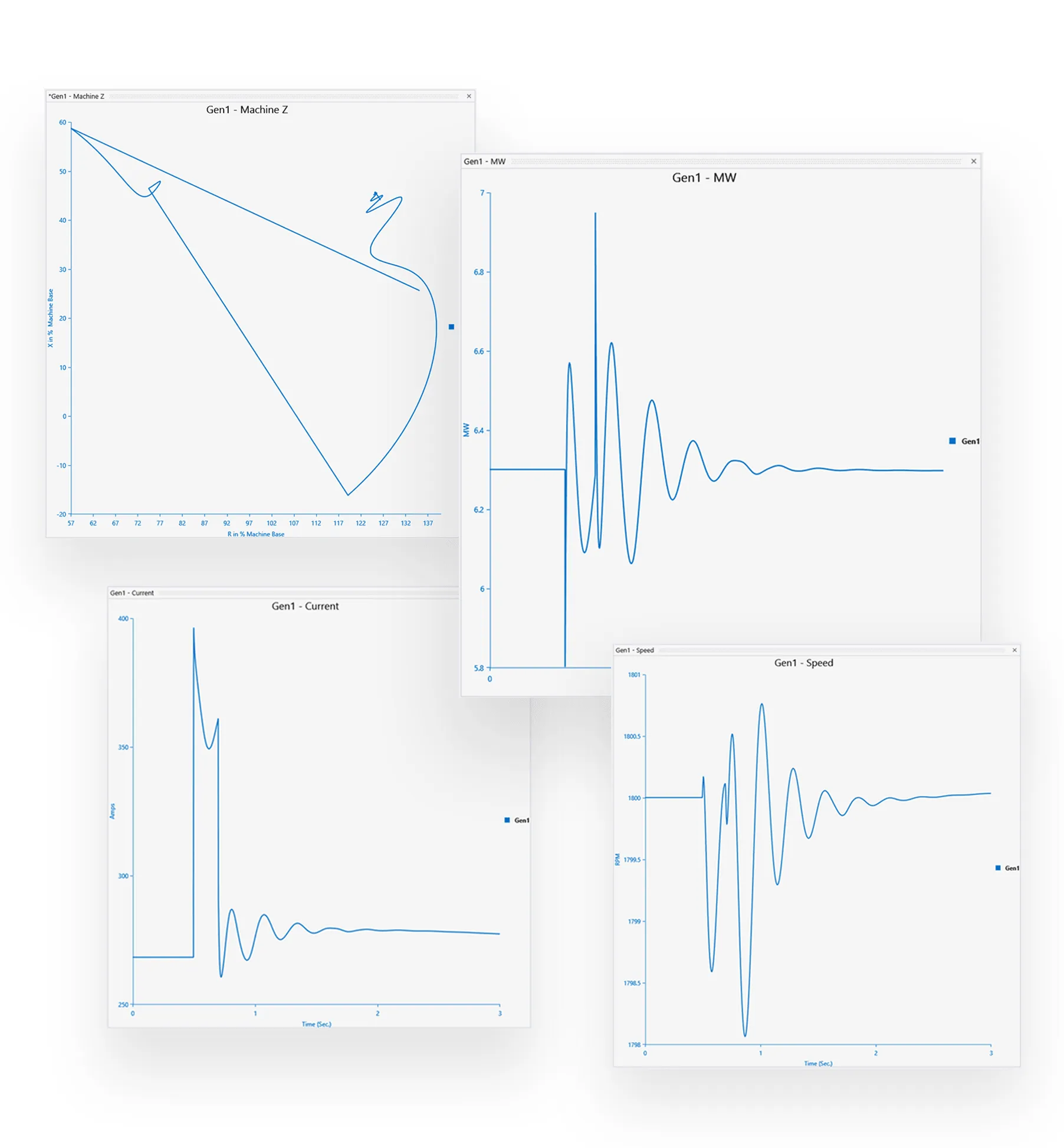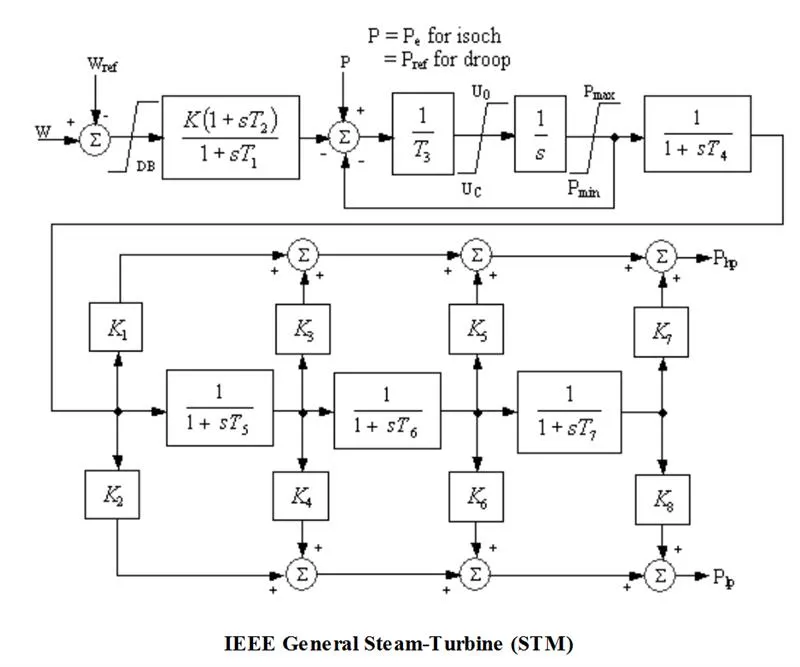
Transient StabilityETAP
Accurately model system disturbances and events for load shedding, fast bus transfer, critical clearing time
Vendor
ETAP
Company Website




Product details
Transient Stability Analysis
Transient stability analysis enables engineers to accurately simulate and analyze power system dynamics and transients via system disturbances and other events. ETAP Transient Stability leverages detailed and validated equipment, protection functions, and built-in and graphical user defined control models to perform analysis for industrial to transmission power systems.
Applications
- Calculate Critical Fault Clearing Time (CFCT) & Critical Separation Time (CST)
- Short & long-term transient simulations
- Confirm generator rotor angle stability
- Evaluate motor dynamic acceleration & reacceleration impact upon power restoration (brown-out)
- Identification and testing load shedding (optimal as well as traditional relay based)
- Computing and testing fast load transferring via fast bus transfers
- Calibrate and evaluate relay settings
- Generator start-up or black-start simulation (add-on module)
- Simulate and analyze microgrids in grid-connected, islanded and transition modes
- Transformer Inrush Analysis
- Grid Code Compliance & Analysis (add-on module)
- Electromagnetic transient simulation (eMTCoSim™) (add-on module)
Analytical Capabilities
- Simulate loss of excitation
- Generator start-up
- Generator frequency action
- Tie CB closing with auto synch-check action
- Utility new voltage actions for Voltage Ride Through – LVRT & HVRT
- Induction and synchronous motor acceleration
- Motor Operated Valve (MOV) starting
- Motor load impact & ramp change
- Handle multiple subsystems and islanded systems
- Automatic relay actions based on relay settings & system response
- Frequency estimation method, with voltage blocking for frequency relay action
- Embedded conventional and adaptive Newton-Raphson initial load flow methods
- eMTCoSim™ - Phasor & EMT CoSimulation (add-on module)
Modeling Capabilities
- Complete synchronous & induction machine models
- Comprehensive excitation system & turbine/engine-governor models
- Static var compensator (SVC) model
- High voltage direct current transmission (HVDC) model
- Standard Power System Stabilizer (PSS) models
- Frequency dependent modeling for synchronous machines (sub-transient models) and induction machines
- Voltage Source Converter / Inverter model
- Renewable and energy storage resource models
- Voltage, current, frequency, power and synch check protective relays
- Electrical Transient Stability Dynamic Modeling
Software Capabilities
- Unlimited sequence of events & actions
- User-controlled simulation parameters
- Set & adjust exciter, AVR, turbine-governor or engine parameters
- Fault impedance for Bus and Branch faults
- Integrated with User-Defined Dynamic Models (UDM) Program
- Inverter charging/discharging state
- Variable total simulation time & simulation step
- Faster calculation time by skipping tabular plots
- Electrical Transient Stability Reporting
- Plot useful quantities for various equipment (Plot View)
- Graphically compare results of different study reports (Plot Analyzer)
- Live Plot of analysis results within One-line diagram and Plot View
Disturbance and Events
- 3-phase & Line-Line, Line-Ground & Line-Line-Ground fault actions
- Branch segment fault
- Protective device open and close
- Generator
- Power set-point adjustment
- Voltage set-point adjustment
- Isochronous / droop mode changes
- Field winding fault
- Loss of excitation
- Start
- Power Grid
- Voltage drop impact and rise/swell
- Frequency change
- Motor
- Acceleration/reacceleration
- Acceleration using conventional starters
- Acceleration using conventional soft-starters
- Acceleration using conventional VFD
- Load adjustment
- WTG
- Wind gust
- Wind ramp
- User-defined wind disturbance
- Load step ad ramp power change
- Motor Operated Valve (MOV) start
- Variable Frequency Drive (VFD) frequency change
Find more products by category
Enterprise Resource Planning (ERP) SoftwareIndustrial SoftwareView all